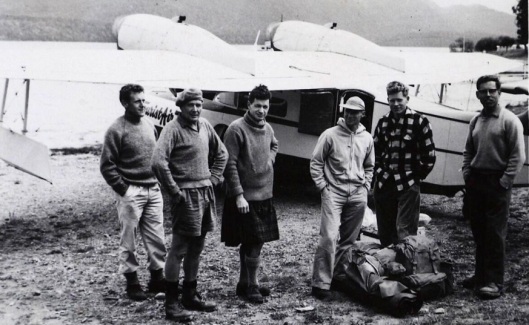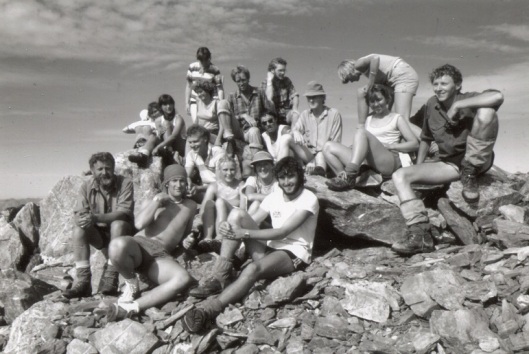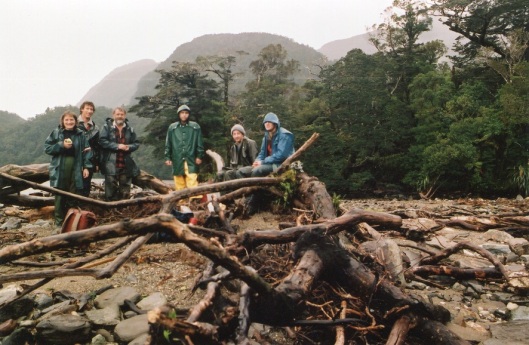
Botanists on a research trip to Secretary Island, Fiordland, in 1964. From left: Alan Mark, Geoff Baylis, George Scott, Larry Bliss, Peter Wardle, Harold Jacobs. Photograph courtesy of the Department of Botany.
Otago was delighted to be listed as one of the world’s most beautiful university campuses by the Telegraph last year, and by the Huffington Post more recently. Otago has another great advantage in being located in the stunning natural environment of southern New Zealand (not that I’m at all biased!). A major part of the appeal of the university for some staff and students is its proximity to spectacular landscapes and opportunities for snow sports, tramping, and other outdoor recreation.
Of course, for some staff and students, notably those in the botany, geography, geology and marine science departments, getting into the great outdoors is not just recreation, but a significant part of their study and research. Over the years undergraduate geography students have attended field camps in various locations around southern New Zealand, among them Tekapo, Pounawea, Herbert, Gunns Bush, Bannockburn and, more recently, Ruataniwha. While the field camps for geography science majors tended to be out in the wilderness, geography arts majors stayed in more settled locations, such as Queenstown, Invercargill, Oamaru and Wanaka. Conditions were not luxurious – Emeritus Professor Peter Holland recalls the year when it was so cold at Bannockburn that the pipes froze and there was no running water! Residential field camps played no small part in the friendly and family-type atmosphere which made the department very popular with students.

Prof Alan Mark (front left) and botany students on Mt Armstrong, in Mt Aspiring National Park, 1984. Michael Heads is at the back wearing a check shirt – do you recognise anybody else? Photograph courtesy of the Department of Botany.
For a couple of decades botanist Alan Mark took the students in his combined second and third year course on New Zealand plant ecology on an extensive 10-12 day field trip to experience the varied ecological niches of southern New Zealand. These remarkable trips generally included on the itinerary Oamaru, the Mackenzie country, Mt Cook, Mt Hutt, the Craigieburn Range, Arthurs Pass, Harihari, Haast, Jackson Bay, Central Otago and the Mt Pisa or Old Man Ranges. Accommodation ranged from shearers’ quarters to Forestry Service stations. It was a physically demanding trip, but once they had recovered students came to appreciate all they had learned, and it certainly brought classes closer together. Botany students also took less demanding weekend trips to Manapouri, with the extra attractions of a boat trip and a good lunch courtesy of the Guardians of Lake Manapouri.
Many postgraduate students and staff of these departments carried out their own extensive field trips as part of their research, and of course marine scientists had their own research vessel … but I’ll save that for another post. Do you have any memorable stories to share about university field trips?


Hi – in the group photo on Mt Armstrong with Alan Mark, could the person 2nd right from Michael Heads be Jake Keogh? Tom